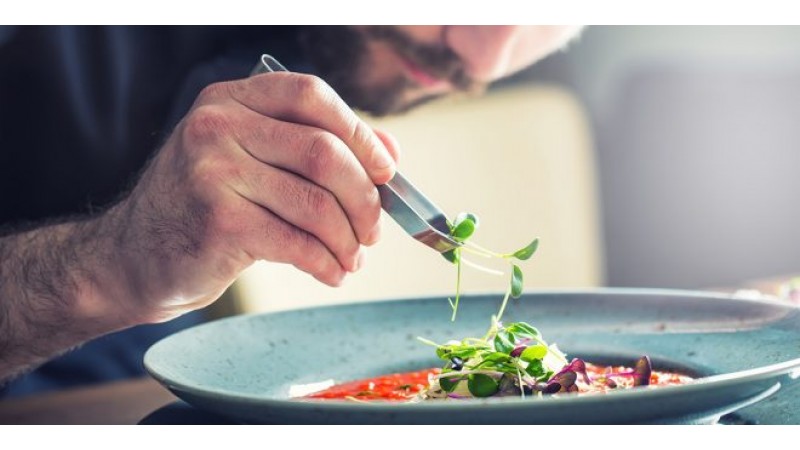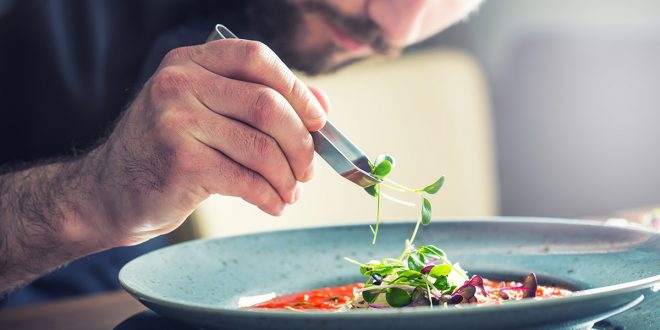
Importance of Food Presentation Techniques and Its Effect on Businesses

Presentation is one of the most important factors that ensure the prestige of a meal. Today, the biggest channels in which restaurant owners introduce themselves are social media platforms and digital markets. Therefore, an important step of promotion is visuality. By using food presentation techniques and the right strategy, you can easily attract customers to your business.
According to the research, a quality food presentation determines the value that customers put on the plate. Thanks to the food presentation techniques that raise the menu prices, the chefs skillfully arrange the ingredients and manage to stimulate the customers' appetites.
Food Presentation Techniques
How to Serve Like a Chef
There are main elements that you need to pay attention to in food presentation techniques.
Food Plating
Your plate is your canvas.
Follow the rule of thirds to eat.
Stimulate your guest's appetite with visual stimuli.
Use the sauce as a dye for your plate.
Decorate to enhance both appearance and flavor.
Pay attention to plate selection.
1. Food Presentation Techniques
Choosing the right plate for your meal is the first step in the food presentation process.
Plate Size

Your plate should be big enough to make your meal stand out and small enough to keep your portions from looking small.
Plate Colors
It is ideal to use light and dark plates to highlight your food. White plates are popular as they offer a neutral background for brightly colored food. Dark plates go well with light-colored dishes such as white fish or creamy polenta.
The regiment of the plate can play a big role in appetite raising and sales. For example, the red color has an appetite-enhancing effect, serving appetizers on a red plate may cause you to receive more orders. Professionals explain that blue is also not appetizing. Following certain rules like this can have a positive impact on your sales.
Food Presentation Techniques
2. Meal Arrangement Techniques
How you organize your food determines the aesthetic tone, structural integrity, and flavor distribution of your food.
Rule of Thirds

The rule of thirds dictates that the focal point of your food is placed on the left or right side of the plate rather than the center. Use the white space by thinking of the frame as your frame and highlighting the focal points of your license plate.
Don't Overfill Your Plate. Portion size is important.
Keep your design simple by focusing on a single component (usually protein). Having a focal point helps you organize your accompanying items to complement your highlight.
Place Damp Ingredients First
Cover damp materials first and cover them with other food to prevent them from flowing. For example, you can angle the sliced meat against the vegetable puree.
3. Visual Service Techniques

Maximizing the visual elements of your food is an important plating technique. Your arrangement evolves around your protein, while other elements focus on embellishing it.
Serving Amount
If you are serving bite-size or small-sized meals, it is ideal that you always serve guests in odd numbers.
Colour Variety
Colorful dishes create a delicious and complex meal prospect before your customers take their first bite. You can increase the expressiveness of your plate by adding green vegetables or brightly colored fruits that contrast with your main product. Learning the color codes and bringing them together in an ideal way will also strengthen the technical side of your meal.
Add Height to Your Plate
You can increase the attention span of your food by increasing the height. While compactly stacking ingredients isn't as popular as it was 5-10 years ago, creating layers of food for guests to explore offers an exciting experience.
4. Sauce Coating Techniques
After your main ingredients are added to the presentation, you are ready to complete your meal with delicious sauces that enrich your plate. Start using your sauce bottle or spoon and your sauce. Don't forget to clean your plate after you've finished the entire presentation!
You can fill a squeezing bottle with your sauce and squeeze it on your plate, place it randomly or add it with certain techniques. You can get help from professional chefs and do detailed research for the most suitable food presentation techniques for your main product.
5. Decoration Techniques
Gastronomy, which has been in continuous development from the past to the present, brings many techniques with it. Note that no product is added to the plate haphazardly.
The garnishes or decorations you add to the plate must be edible. Instead of garnishes that your guests cannot eat, choose garnishes that will enhance the taste of the food.
Placing Plates
It is important that you follow certain rules when adjusting the positions of the products on your plate in the plate. In accordance with the rules of food presentation techniques, be careful not to pile up the garnishes to one side. Do not overfill by paying attention to the amount of products you will add to the plate. There is no such thing as a very full plate looks good and makes an appetite.
Decorations to Avoid. Flavor and texture are important.
Avoid using unappetizing garnishes such as raw herbs, large pieces of citrus, and anything strong-smelling.
Food Presentation Equipment
It is very important to have professional tools when applying food presentation techniques. It is important to clearly define your menu and style when choosing the equipment you will have to create restaurant-quality food presentations.
Equipment such as decoration brushes, decoration sets, certain molds, chef's tweezers, and juice bottles allows you to work meticulously on your food. For detailed information about all these types of equipment, you can visit the industry-leading Turcobazaar Limited.
